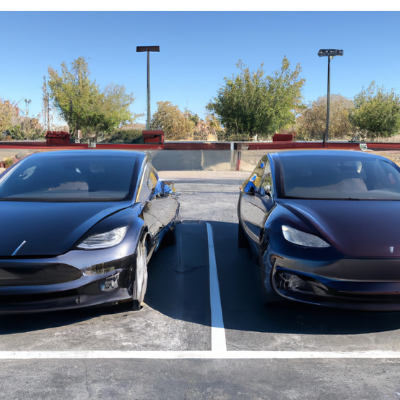Last week, I drove to the store in a small nearby shopping center. Itʻs a place that Iʻve been to many times because itʻs close and there is a big parking lot that  accommodates the shopping center, playground and a canyon with wild animals and many hiking trails. The lot was busy but I found a parking spot easily. I was in the store for about 15 minutes before returning to the car. I have a Tesla, which allows your mobile phone to control the car. The phone is the “key” to start the car although nothing needs to be pressed on the phone or in the car. The phone also locks and unlocks the car automatically based on distance.
accommodates the shopping center, playground and a canyon with wild animals and many hiking trails. The lot was busy but I found a parking spot easily. I was in the store for about 15 minutes before returning to the car. I have a Tesla, which allows your mobile phone to control the car. The phone is the “key” to start the car although nothing needs to be pressed on the phone or in the car. The phone also locks and unlocks the car automatically based on distance.
Sometimes, the phone key doesnʻt work. When that happens, the car tells you to swipe the Tesla card key to start the car. The card key has always worked in the past. It didnʻt work this time after five attempts. I reset the touchscreen, which is sort of a reboot of the software. That didnʻt work either. Neither the phone nor card key enabled the car to turn on. Possibly the card key wasnʻt working in the same way that credit cards get disabled if they come too close to other magnetic cards. I called my husband to come back to the car from his hike so he could walk back to the house and get the other card key. He got in the car and saw that both the phone and card key were not working. As a last attempt, he suggested it was remotely possible that getting out of the car might work. I got out of the car and decided to call for Teslaʻs road assistance.
While I was calling road assistance, a man walked up to the car, opened the driverʻs door and asked my husband if he was sure this was his car. We were in the wrong car! I had gotten into a gray Tesla—the same color as my car. There was a gray Tesla parked next to the car I was in, but there are a lot of gray Teslas. I didnʻt notice the obvious signs that I was in the wrong car:
- The carʻs inside color was black; mine is white
- This was a Model 3; mine is a Y, which is taller
- I saw spots on the driver’s door which my car didn’t have
Usually, a Tesla will lock automatically when the phone or card key is not close. How did I get in since I did not have the key for this car? The car was unlocked. It was a loaner car and the driver said he did not bother to set the car to auto-lock.
Ignoring obvious differences and not thinking about what they mean when viewed in totality is often the reason for large mistakes that occur. In retrospect, analysis of the events reveal that something different was noticed and ignored. That allowed subsequent events to make the situation or problem worse.
How often does this happen in your business? We set out on a purpose using the familiar thoughts and actions but do not pause to question or think about signals that something is different. When something isnʻt working as expected, and the usual fixes are not resolving the problem, it is worth taking the time to re-examine the situation from a higher level. Make sure that obvious differences and a new situation arenʻt being ignored.
It could mean a risk or an opportunity.


Leave A Comment
You must be logged in to post a comment.